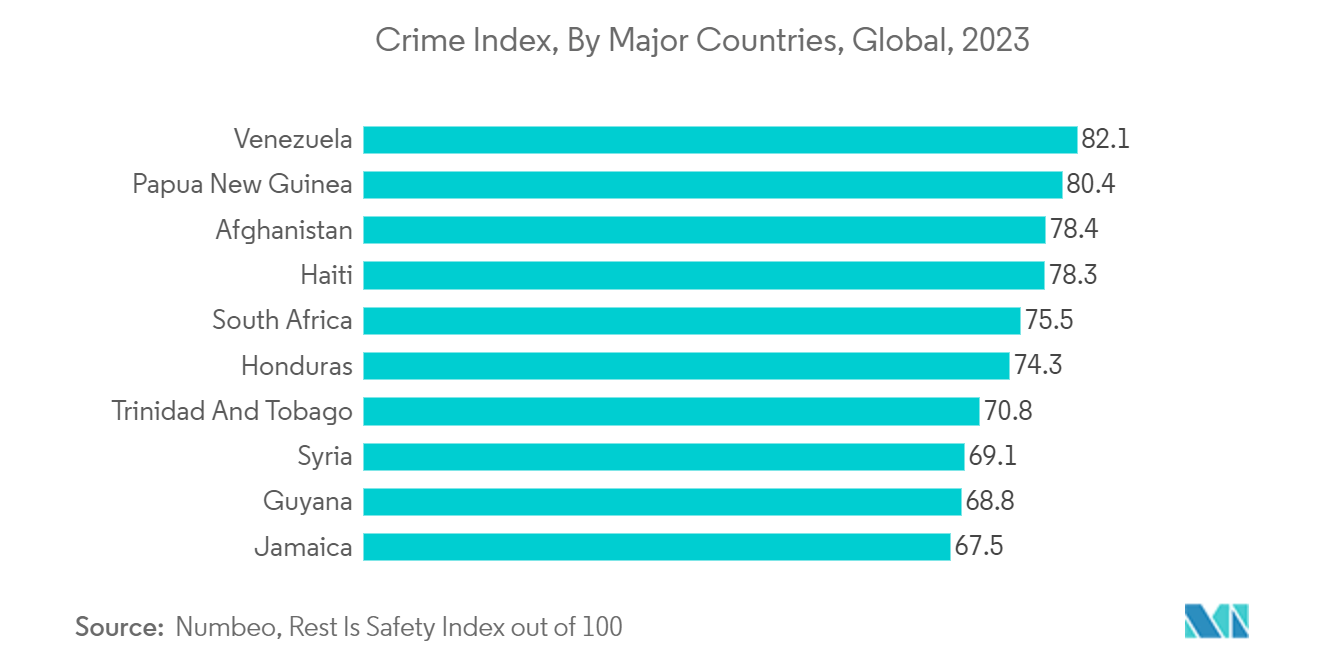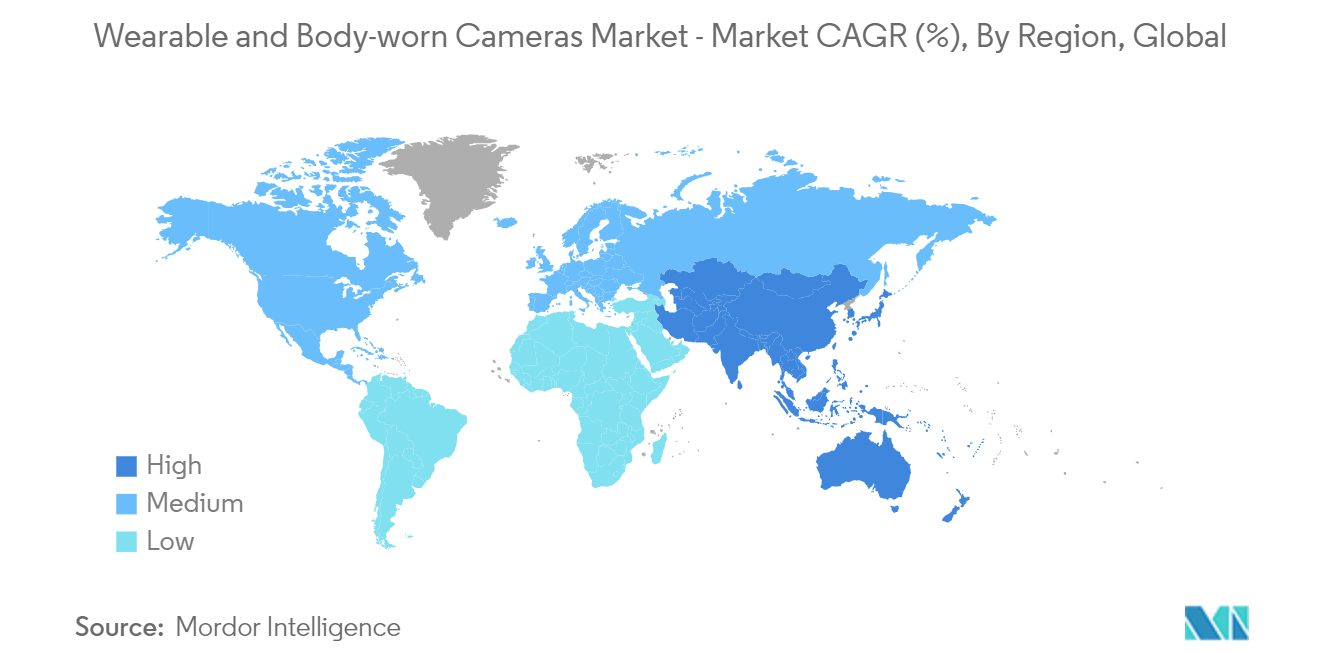Market Trends of Wearable And Body-worn Cameras Industry
Rising Crime Rate Across Various Regions Will Drive the Market
- It was disclosed in March 2022 that the Lorain County Sheriff's Office would equip 75 deputies with body-worn video cameras. Lorain County Sheriff's deputies will soon be outfitted with body cameras after the Lorain County commissioners unanimously approved a resolution allocating USD 302,807 for purchasing 75 Pro-Vision BodyCam 4s with a service plan that includes cloud storage. This program attempts to boost public openness, enhance officer safety, and offer more evidence in court.
- To boost the number of law enforcement officers across the Commonwealth equipped with body-worn cameras, the Baker-Polito Administration announced USD 2.5 million in grant funding in November 2022.
- The government is increasing resources for local agencies to extend the use of body-worn cameras, which are a crucial tool to improve investigations, increase accountability, and reinforce links between police and the communities they serve. As part of a 5-year, USD 20 million investment in the technology across Massachusetts, the Baker-Polito Administration granted USD 4 million to assist with implementing or expanding the local police department's body-worn camera programs. The body-worn camera grants for this year are a continuation of that dedication. The funds will enable 27 departments to launch new body-worn camera programs in 2023, while five departments will be able to extend existing programs.
- In March 2022, the Mayor of Columbus announced an approximately USD 19 million investment in advanced technology for body-worn and in-car cameras for Columbus Police personnel. Higher audio and video quality, automated activation to defend against user error, synchronization between body-worn and in-car cameras, and the ability to recall videos from up to 24 hours before an occurrence are all made possible by technological developments.
- These contractual developments will be incorporated, in whole or in part, into the subsequent generation of video technology advancements. The features included in this deal with Axon Camera Systems will substantially enhance the Columbus Division of Police's capacity to record, recognize, store, and distribute audio and video footage. Therefore, the growing crime rate across various regions and the government aid in implementing advanced technologies such as body-worn cameras are expected to boost the market's growth during the forecast period.

North America is Expected to Hold Major Share
- The North American region consists of the United States and Canada, which prioritize using advanced devices, such as wearable cameras, in their police department to reduce the crime rate in the region. State and local law enforcement agencies in the United States often use body-worn cameras. Officers mostly use them in conducting duties that require open and direct contact with the public, driving the market demand in the region.
- Body-worn cameras are used to document interactions between the police and the general public during enforcement, investigations, and other activities. They offer an impartial record of these encounters, make it easier for officials to analyze what happened, promote accountability, and support good, lawful relationships between the public and the police.
- In the United States, body-worn cameras are worn by every police officer, detective, sergeant, and lieutenant who is frequently assigned to patrol the city. In addition, the New York City Police Department (NYPD) launched the largest body-worn camera program nationwide, with over 24,000 employees wearing cameras in the United States.
- Also, In May 2023, The US government decided that all the people who work in the Department of Homeland Security, like police officers and security guards, need to wear cameras on their bodies. This includes people who work at the border, protect important people like the President, and guard government buildings. These cameras were given to them in 2021.
- Likewise, the Canadian police department has been implementing the use of video camera-integrated policing activities to make the process unbiased. For instance, in October 2022, as part of the Royal Canadian Mounted Police's Vision150 modernization strategy, the department would distribute body-worn cameras and a Digital Evidence Management System (DEMS) to the Royal Canadian Mounted Police (RCMP) officers nationwide.
- Body-worn cameras can aid in increasing trust between police and the communities they serve since the video evidence obtained would give an impartial, unbiased, and objective tool to capture interactions between the community and police personnel. According to RCMP, between 10,000 and 15,000 body-worn cameras would be issued to contract and federal law enforcement personnel who contact the public in rural and metropolitan of the country.


